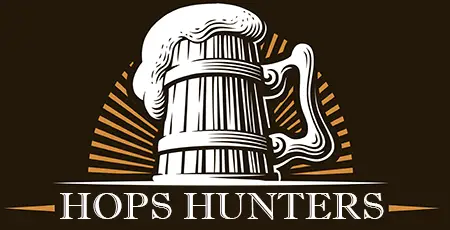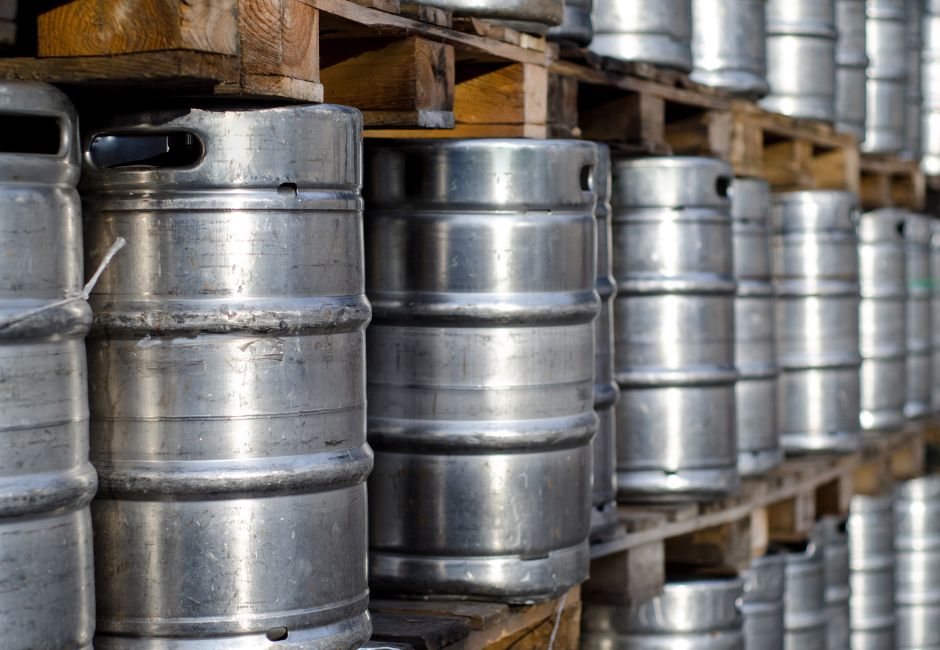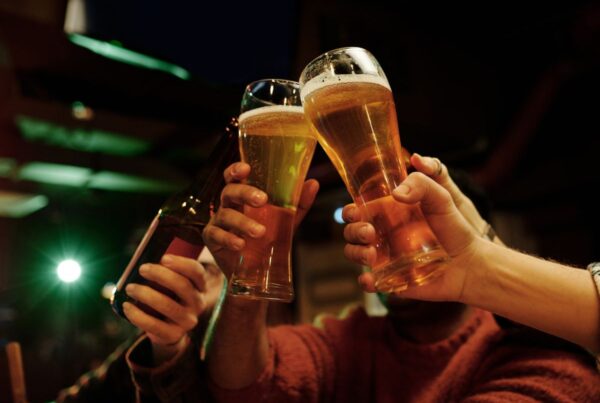How Many Beers in a Case/Pallet/Barrel?
It’s always best to be well-informed when navigating the world of beer—whether you’re stocking up for a party, organizing a commercial event, or just satisfying personal curiosity.
The most “basic” unit of beer is arguably the can or the bottle. But as you know, beer is sold in various larger quantities that are suited for unique purposes. In this complete guide, we’ll explore the quantities that correspond to these different units, packages, and measurements.
So grab a cold one, sit back, and let’s shed some light on exactly how many cans or bottles you’ll find in a case, how many cases of beer are on that pallet, and just how much beer is in that keg. And in just a few moments, you’ll have a much clearer picture of what these measurements actually mean:
How Many Beers are in a Case?
In standard beer parlance, a “case” refers to a package containing 24 cans or bottles. Each of these containers is typically 12 ounces in volume, making a total of 288 fluid ounces per case.
Why 24 cans? Well, it’s a neat, manageable quantity that’s easy to transport, and the quantity is reasonable both for home use as well as small events.
However, there’s an important caveat: not all beer cases strictly adhere to this formula. The actual number can vary depending on factors like the type of beer, and the brand.
Some craft beer breweries, for example, might package their beer in 16-ounce cans, resulting in a different total volume per case.
Scaling Up: Beer by the Pallet
For those dealing with larger quantities of beer—think restaurant owners, event planners, or really enthusiastic party hosts—beer can also be bought by the pallet.
Cases are typically—but not always—arranged on a pallet in a configuration of 6 layers, with each layer holding 10 cases. Thus, a single pallet may accommodate up to 60 cases of beer.
Why 60 cases? Well, it’s a sweet spot for stability, efficiency, and space utilization when you need to safely move around large amounts of beer.
Barrels & Kegs
When it comes to beer barrels or kegs, the calculations change considerably. A standard full keg (A.K.A. “half barrel”) holds an impressive 31 gallons of beer. Converted into more familiar measurements, that’s roughly 165 12-ounce bottles or cans, or about 124 pints.
Once again, variations can occur based on the size of the cans or bottles being filled. Bubba kegs, pony kegs, and other non-standard keg sizes also offer different quantities—further complicating the equation.
How Local Legal Limits Can Alter These Standard Quantities
The regulation of beer quantities isn’t just a matter of practicality—in some cases, it’s the law. For instance, North Carolina’s beer laws cap the amount of beer one person can purchase at one time to 192 ounces.
To put that into perspective, that’s roughly equivalent to sixteen 12-ounce beers, or about ⅔ of a standard case. Such a restriction has implications for both consumers and breweries in North Carolina, and it serves here as an illustration of how legal considerations can affect beer purchases and consumption.
It’s always important for buyers to be aware of their local laws and regulations when planning to purchase any quantity of beer—whether in cases, by the pallet, or in barrels/kegs.
Wrapping It Up
Understanding beer units and quantities isn’t merely an exercise in numbers. It intertwines legal awareness and responsible drinking with logistical know-how.
Whether you’re buying by the case, the pallet, or the barrel, knowing what you’re getting—and what you’re legally allowed to get, as in the North Carolina example—is crucial. It underscores the fact that every state (and every locality in general) might have its own distinct rules, and it falls upon us as consumers to research and familiarize ourselves with them.
Further Reading:
- How Many Beers are in a Keg? – A guide to every size of keg with detailed information about their respective beer capacities, from mini and pony kegs to the standard keg A.K.A. half-barrel. It offers exact figures on how these different sizes translate into the number of actual “beers,”—a must-read for beer enthusiasts looking to deepen their understanding of beer volumes and keg dimensions.
Beer & Liquor: The Shots-to-Beers Conversion Guide – Provides approximate comparisons between the alcohol content in beer and various types of spirits, including vodka, tequila, whiskey, and rum. This resource also explores the concept of Alcohol by Volume (ABV) and offers a rough equivalency chart for beer and different spirits.






